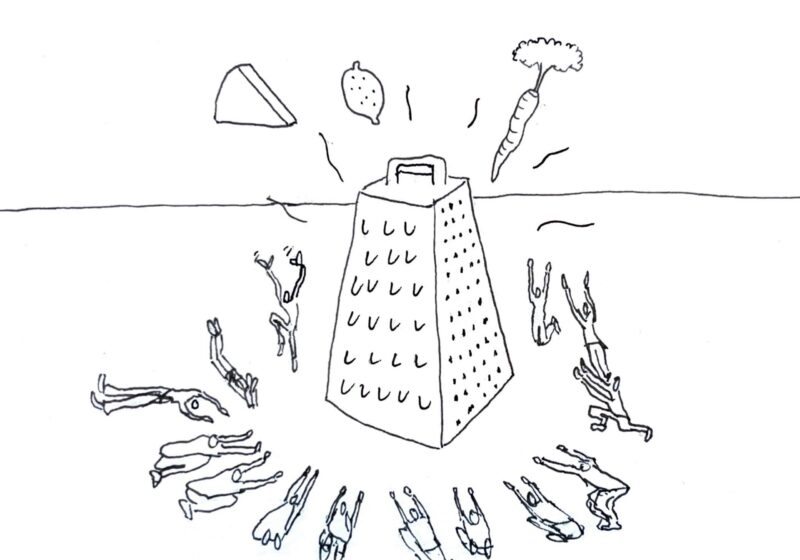The Sean Taylor of my memory looks more like a teenager than he did an adult. When he smiled, he became the epitome of youth. For years to come, when I think of Sean Taylor, that will be the image I envision.
When he was drafted by the Washington Redskins, I was a freshman in college. Though only two years separated us, I felt as though we were worlds apart. Taylor was a professional football player for the team that I loved, and I was a freshman in college who had no idea what I wanted to do with my life. A few highlight reel interceptions and bone-crushing tackles later, and I was hooked. Before the end of his rookie season, I owned a Sean Taylor jersey and wore it all the time. Soon after, I bought a football Madden ’05 so that I could control not only my favorite team but, more importantly, my favorite player – Sean Taylor. So as I sat in my dorm room in the second semester of freshman year accumulating stats for the digital Sean Taylor, the real one had just recently celebrated his 21st birthday. But the distinction between Sean Taylor and myself was clear – I was the awe-struck kid, and he was my role model.
But soon, Taylor experienced off-field issues that challenged my idealistic conception of him. On Oct. 28, 2004, he was pulled over in Fairfax, Va., and charged with a DWI. By March 10th of the following year, however, the charges stemming from his DWI were dropped and, though his decision to refuse a blood alcohol test remained suspect, my overall positive attitude toward Taylor remained intact.
Just three months later, Taylor was charged with one felony count of aggravated assault with a firearm. In response to Taylor’s felony charge, Washington Post writer Michael Wilbon posited that he “has yet to demonstrate the first sign of responsibility or that he has any clue of what being responsible is. He’s an adult, 22 years old, responsible for his own behavior.” To some extent, Wilbon was right. Taylor’s behavior was the antithesis of the principles that parents would expect to be espoused in the men whom their children idolized.
Close to a year later, Taylor took a plea bargain in which his charges were reduced to misdemeanor assault and battery and, over the course of this year, Taylor started to become more responsible. Almost two months after his initial felony charge, Taylor revealed in an interview that “it would be wrong for me to look at my situation and say, ‘I haven’t learned. It’s not going to change me.’ Of course, it’s going to change you.” Whereas Wilbon believed that Taylor’s reckless behavior was not influenced by his age, Taylor’s comments showed otherwise. Perhaps the “change” that Taylor believed to have come from his past transgressions was part of his maturation process. While a 22-year-old in our society would be defined as an “adult,” this designation would not preclude that individual from acting upon inherently “youthful” ideals.
The 2005 NFL season was a turning point for Taylor. On the field, Taylor became an essential piece of the Redskins’ defense, helping to lead them to the playoffs for the first time since 1999. Off the field, Taylor stayed out of legal trouble for the first time since he was drafted. Critics will cite an incident in which Taylor spit on the face of an opposing player, leading to his costly ejection from a playoff game. But, given the positive progression he had made, this incident was merely an isolated misstep – a childish moment of foolishness. After all, the process of becoming a man does not happen overnight.
By the 2006 season, Taylor’s ascension into manhood appeared complete. His teammates and coaches praised him for his work ethic during team practices and for his diligence during film sessions. His personal life also began to take upon a newfound stability and meaningfulness. According to Antrel Rolle, Taylor’s childhood friend and former college teammate, Taylor realized the dangers of the “bad crowd” surrounding him and felt as though “he just had to distance himself from everyone and live a life of his own… I’ve never seen anyone make such a dramatic change.” Around the same time, Taylor and his girlfriend, Jackie Garcia, conceived a child together. Taylor’s rededication toward family life corresponded with a realization he had following his felony charge. “You kind of appreciate your family a little bit more. That bond is stronger, and you feel like, ‘Hey, let me try to do more,'” he said.
Two weeks ago, Sean Taylor was undeniably a role model to his teammates and fans. During the 2007 season, he had become one of the leaders on the team. Older teammates rallied behind him. Washington Redskins Defensive Coordinator Gregg Williams recalled that “every day he stopped and talked to the kids. Everyday in training camp.” ESPN writer Elizabeth Merrill also related a story of how Taylor voluntarily showed up at a high school “full of inner-city kids and at-risk teenagers and spoke to the students for three hours about,” among other things, “staying on the straight path.”
Even the tragic death of Sean Taylor provides further evidence of Taylor’s maturation. Though the details of Taylor’s fatal shooting are still unclear, one thing is certain: Sean Taylor died while protecting his family from harm. The act of caring for and protecting the lives of your family from danger is the highest form of responsibility that any adult can take. Thus, Taylor’s courageous act of risking his own safety for that of his family exemplifies the full extent of his psychological growth over the past two-year period.
As my mind drifts back to the image of Sean Taylor, I see the smiling and youthful face of someone who couldn’t possibly be an adult. But when I consider the life he led over the past two years – the teammates he inspired, the young fans he guided and the family he gave his life for – I realize that Sean Taylor was not only an adult, but the type of adult that I myself one day aspire to become.
Two years ago, as Taylor was reflecting upon the incident that led to his felony charge, he came to an important realization: “There’s so much more to live for than to go out by a bullet.” In the time since, he began to appreciate the truly important aspects of life and, in doing so, became a genuine role model to myself and to many others. Hopefully, this is the Sean Taylor that will continue to live on in our minds and hearts.
Schwartz is a Take Five student.


